| Heading out through Charleston we passed the Catholic Church of
the Blessed Sacrament. We didn't go inside but I suspect the view through
the stained glass window is quite impressive. | 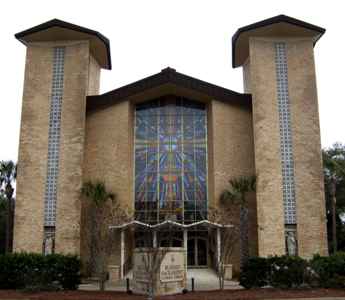 |
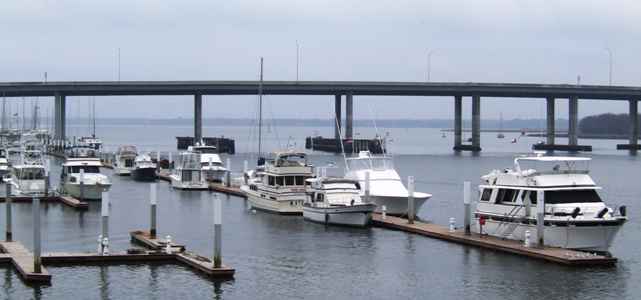 | We continued
along the coast towards Georgetown, a smaller industrial town which
originally was the centre of the rice growing industry. Today it has both an
industrial and a historical base. |
| The industry is partly this huge paper mill which towers over the
town, and which produces a wide range of paper and cellulose products.
Opposite it is a steel plant which is the largest producer of wire for
radial tires in the US. It makes entering the town much like approaching
Sheffield via Tinsley was when I first went there. | 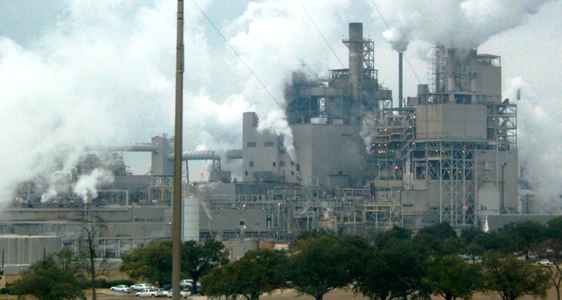 |
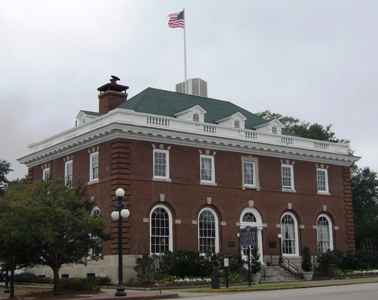 | The town
itself is much smaller than those we have been used to but some of the
architecture is from the same period. This is now the visitor centre,
although a law firm occupies the upper floors and I think there are some
civic meeting rooms. |
| There is only one street of shops but some of these have
interesting facades. This is no longer a fish market. | 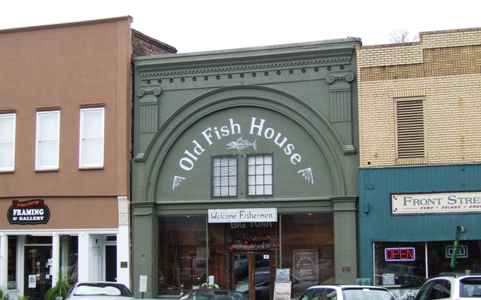 |
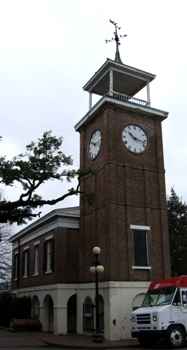 | The town clock
tower rises above the old market buildings which today house a small museum
covering the rice growing industry, which was the mainstay of the area
before the Civil War. |
| Inside is a model of a rice mill more in the sort of scales I'm
familiar with. These are old models and dioramas and interesting in
themselves as well as for what they portray. | 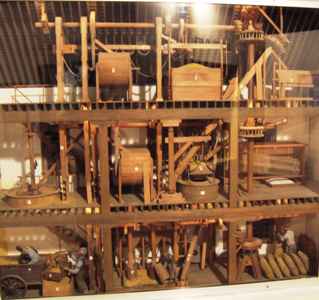 |
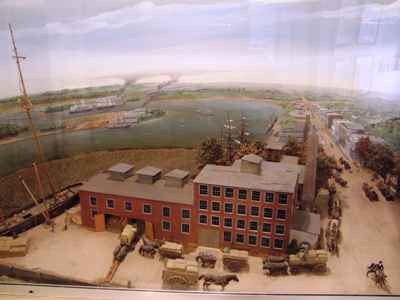 | This is a
model showing the warehouse and dockside with the carts bringing the rice
from the plantations. South Carolina was famous for its rice. Many of the
African slaves came from the Gambia and other west coast countries where
they had experience of cultivating rice. |
| Behind the warehouse is a tall ship loading. The dioramas are 3D
with perspective fading into the background. This was common at one time but
is rarely seen today. | 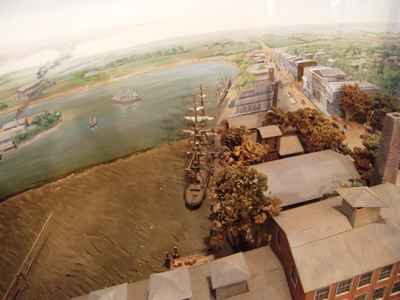 |
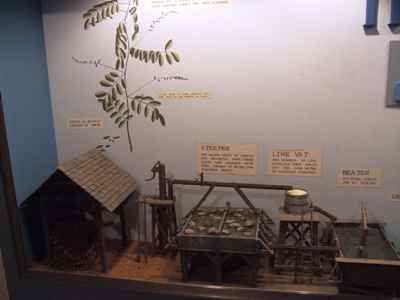 | Another crop
(and a very lucrative one) was indigo. This diorama portrays the process of
preparing the dye which was highly prized, particularly by the British Navy
for its uniforms. |
| This is a section of a large map showing who owned the various
plantations. Certain names were very common and are still common in the area
today. There are several large rivers and at the seasonal high tides, the
fresh water would be backed up by the tide and would flood the fields with
fresh water. By means of controlling dykes and sluice gates this water flow
could be controlled to create perfect conditions for rice cultivation. | 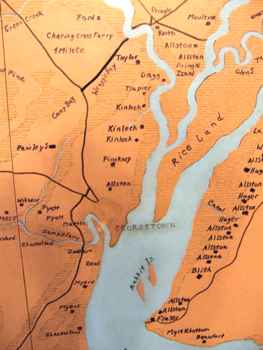 |
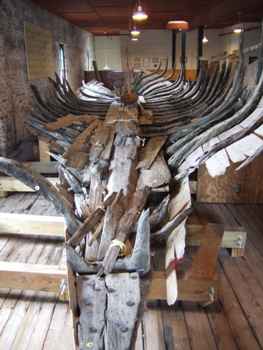 | This is what
remains of a boat which was found buried in the estuary. It is of particular
significance as having been one of the first American-built boats. They had
to break it in places to get it in the building and it is now held together
with over 3000 brass bolts. Unfortunately parts of the boat had been taken
by souvenir hunters before it was raised, including the stem. |
| The museum is housed in what was a general store for many years.
These are ledgers and day books from the 1700s and a valuable primary source
of information on life in those times, and a reminder of how records were
kept prior to the computer. | 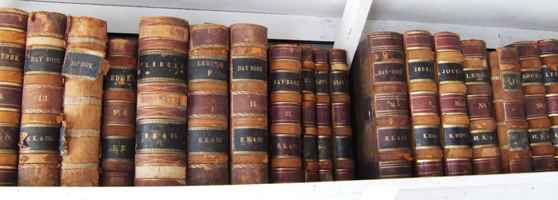 |
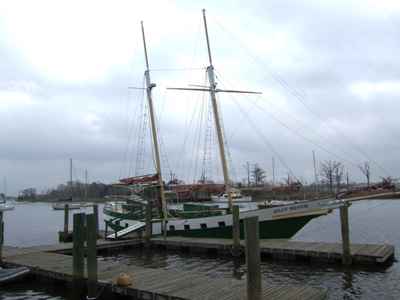 | A modern
replica of the many small schooners which used to ply these waters, often as
part of the smuggling and piracy trade which was rife at one time, is moored
near the boardwalk. |
| We camped at Myrtle Beach State Park. The rest of the 25 mile
long, very touristy sea front left us cold, but the 6,000 acres of the park
were fine. The state park campsites have always proved to be good value, if
sometimes (but not always) a little limited in facilities. This is the
fishing pier. | 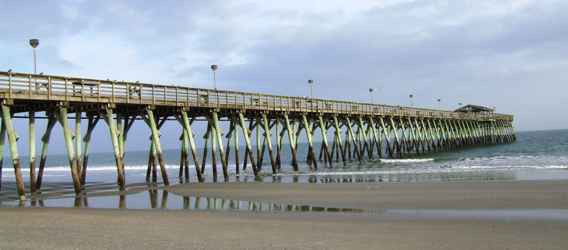 |
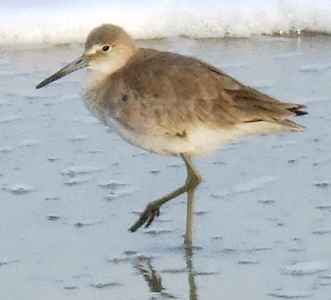 | Most of the
seabirds we saw were terns but this was a little different although I'm not
sure exactly what it is. |
| There is the beach, then the dunes, then some woods with nature
trails, one of which leads to this lake, which today was home to a couple of
mallard. Generally the area was very quiet with little bird life. This has
pretty much been the story of our trip. We've never been in the right place
at the right time. | 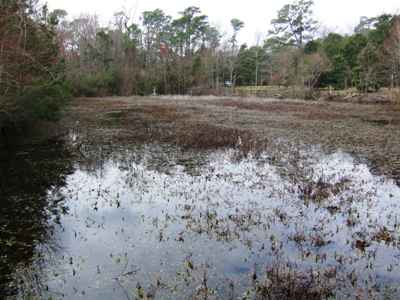 |
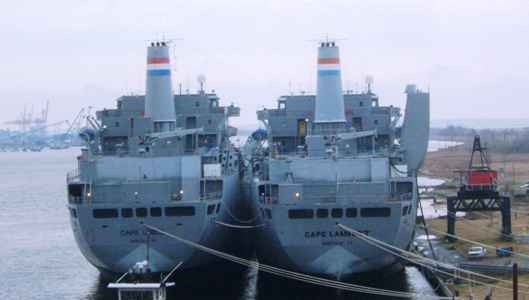 | Moving on
northwards we crossed a bridge and spotted these two naval auxilliaries at
anchor. There are naval facilities in most of the river mouths along this
coast. |
| Couldn't resist this sign at the entrance to a mall. I can dunk
donuts - all on my own..... | 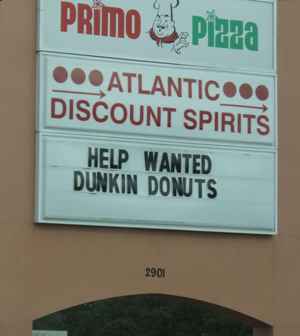 |
|